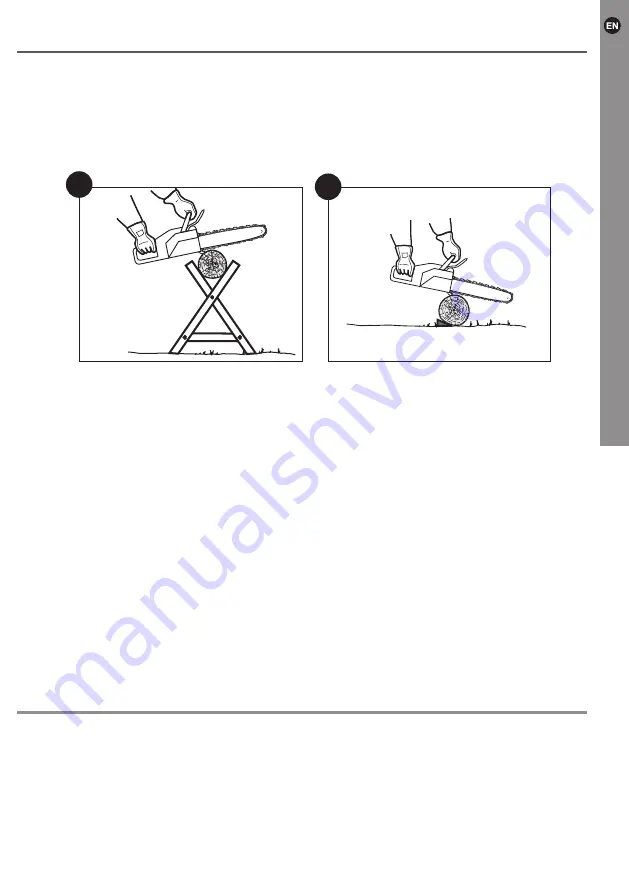
45
ECSP51
In
more
detail
. . .
5. Support small logs on a sawing stand or another log while bucking (Fig. 37).
6. If the wood diameter is large enough for you to insert a soft bucking wedge without
touching the chain, you should use the wedge to hold the cut open to prevent
pinching (Fig. 38).
37
38
Freeing a trapped saw
It the saw becomes trapped during cutting, operators should
a) switch off the saw and attach it securely to the tree inboard (i.e. towards the trunk
side) of the cut or to a separate tool line,
b) pull the saw from the kerf while lifting the branch as necessary, and
c) if necessary, use a handsaw or second chain saw to release the trapped saw by
cutting a minimum of 30 cm away from the trapped saw.
Whether a handsaw or a chain-saw is used to free a trapped saw, the release cuts
should always be outboard (toward the tips of the branch), in order to prevent the saw
being taken with the section and further complicating the situation.
Regardless of whether a handsaw or a chain saw is used to release a jammed chain
saw, the cuts to release the chain saw should always be made on the outside (towards
the branch tips) in order to ensure that the chain saw does not fall along with the sawn
off parts and make the situation even more complicated.
After use
1. Stop the engine, disconnect the spark plug connector and let the product cool down.
2. Check, clean and store the product as described in section
“The golden rules for
care”
.
Operation
















































